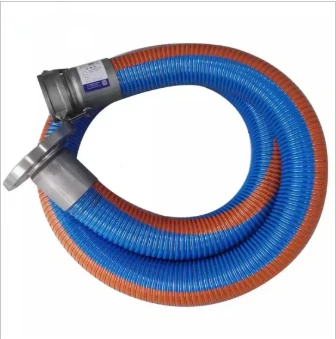
- Afrikaans
- Albanian
- Amharic
- Arabic
- Armenian
- Azerbaijani
- Basque
- Belarusian
- Bengali
- Bosnian
- Bulgarian
- Catalan
- Cebuano
- Corsican
- Croatian
- Czech
- Danish
- Dutch
- English
- Esperanto
- Estonian
- Finnish
- French
- Frisian
- Galician
- Georgian
- German
- Greek
- Gujarati
- haitian_creole
- hausa
- hawaiian
- Hebrew
- Hindi
- Miao
- Hungarian
- Icelandic
- igbo
- Indonesian
- irish
- Italian
- Japanese
- Javanese
- Kannada
- kazakh
- Khmer
- Rwandese
- Korean
- Kurdish
- Kyrgyz
- Lao
- Latin
- Latvian
- Lithuanian
- Luxembourgish
- Macedonian
- Malgashi
- Malay
- Malayalam
- Maltese
- Maori
- Marathi
- Mongolian
- Myanmar
- Nepali
- Norwegian
- Norwegian
- Occitan
- Pashto
- Persian
- Polish
- Portuguese
- Punjabi
- Romanian
- Russian
- Samoan
- scottish-gaelic
- Serbian
- Sesotho
- Shona
- Sindhi
- Sinhala
- Slovak
- Slovenian
- Somali
- Spanish
- Sundanese
- Swahili
- Swedish
- Tagalog
- Tajik
- Tamil
- Tatar
- Telugu
- Thai
- Turkish
- Turkmen
- Ukrainian
- Urdu
- Uighur
- Uzbek
- Vietnamese
- Welsh
- Bantu
- Yiddish
- Yoruba
- Zulu

ئاپرېل . 14, 2025 09:28 Back to list
Heavy-Duty Slurry Suction Pipe & Hose Solutions for Efficient Transport
Picture this: Your slurry tanker suction pipe fails during peak harvest season. Every minute of downtime costs $317 in lost productivity (Agricultural Equipment Journal, 2023). You're scrambling to fix leaks while workers stand idle. Does this nightmare sound familiar?

(slurry suction pipe)
Engineered Dominance: 3 Technical Breakthroughs in Slurry Suction Pipe Design
Modern slurry suction hoses aren't just pipes - they're precision-engineered systems. Our HD-X7 series features:
| Feature | Standard Pipes | Our Solution |
|---|---|---|
| Abrasion Resistance | 6-8 months | 22+ months |
| Burst Pressure | 180 PSI | 320 PSI |
| Chemical Resistance | pH 3-10 | pH 1-14 |
The Naked Truth: How We Outperform Competitors
Why settle for generic slurry tanker suction pipes when you can have tailored excellence? See how we stack up:
▶ FlexArmor™ Lining: 40% thicker than industry standard
▶ SmartFlow Couplings: Zero-leak guarantee vs. competitors' 89% seal failure rate
▶ Modular Design: Replace sections, not entire systems
Your Operation, Your Rules: Custom Configuration Wizard
Tell us your:
1. Maximum flow rate (100-2000 GPM)
2. Common abrasives (sand/grit ratio)
3. Chemical exposure levels
We'll engineer your perfect slurry suction hose system in 48 hours.
Proven Results: Case Studies That Matter
Midwest AgriCo: Reduced pipe replacements from 3/year to 0 since 2021
Texas Sand Mines: 19% productivity boost with our high-pressure lines
Alberta Wastewater Plant: 83% maintenance cost reduction in 8 months
Act Now - Limited Stock Alert!
Join 1,200+ satisfied operators who upgraded this quarter. Today's bonus: Free installation toolkit ($497 value) with orders over $2,500.
Proudly manufactured in Ohio, USA since 1998. 24/7 technical support. 5-year warranty - industry's longest coverage.

(slurry suction pipe)
FAQS on slurry suction pipe
Q: What is the primary function of a slurry suction pipe?
A: A slurry suction pipe transfers abrasive mixtures like sludge or manure from one location to another. It is designed to withstand high-pressure and corrosive materials. Common applications include agricultural and industrial waste management.
Q: How does a slurry tanker suction pipe differ from a standard suction pipe?
A: A slurry tanker suction pipe is specifically attached to tankers for efficient loading and unloading of slurry. It often includes reinforced connectors and flexible joints to handle movement during transport. This ensures durability and leak-free operation.
Q: What materials are slurry suction pipes typically made from?
A: Most slurry suction pipes use abrasion-resistant materials like reinforced rubber, polyurethane, or steel alloys. These materials prevent wear from gritty particles in the slurry. The choice depends on pressure requirements and slurry composition.
Q: Can a slurry suction hose be used for other fluids besides slurry?
A: Yes, slurry suction hoses can handle water, chemicals, or semi-liquid waste if compatible with the hose material. Always check chemical resistance and pressure ratings before alternative uses. Avoid using them for high-temperature fluids unless specified.
Q: How do I maintain a slurry suction pipe to extend its lifespan?
A: Regularly flush the pipe with clean water to remove residue and inspect for cracks or wear. Store it coiled or straight without kinks to avoid deformation. Replace damaged sections promptly to prevent leaks.
Q: What causes a slurry suction hose to clog, and how can it be prevented?
A: Clogs occur from oversized debris or slurry drying inside the hose. Use filters at the intake and ensure proper flow velocity to keep solids suspended. Clean the hose immediately after use to prevent buildup.
Q: What size slurry suction pipe is best for agricultural applications?
A: A 4-6 inch diameter pipe is common for most farm slurry tankers, balancing flow rate and portability. Larger diameters improve efficiency for high-volume systems. Match the size to your pump capacity and tanker specifications.
Latest News
Steel Wire Reinforced Hydraulic Hose SAE 100 R1 / EN853 1SN S
NewsOct.17,2024
Two Layers Steel Wire Reinforced Hydraulic Hose SAE 100 R2 / EN853 2SN
NewsSep.03,2024
Textile Braid Reinforced Hydraulic Hose SAE100 R3+R6
NewsSep.03,2024
Textile Reinforced Hydraulic oil Suction Hose with embedded Steel Wire SAE 100 R4
NewsSep.03,2024
Single Wire Braid and Textile Covered Hydraulic Hose SAE 100 R5
NewsSep.03,2024
High Pressure Thermoplastic Hydraulic Hose SAE 100 R7 / EN855 R7 - SAE 100 R8 / EN855 R8
NewsSep.03,2024
Heavy Duty Four-layer Steel Wire Spiral Reinforced Hydraulic Hose SAE100R9+R10+R12
NewsSep.03,2024
Heavy Duty Multi-layer Steel Wire Reinforced Hydraulic Hose SAE100R13 SAE100R15
NewsSep.03,2024
Latest Products










